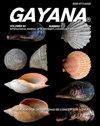Barreras geográficas: ¿Intervienen en la composición y distribución longitudinal en la comunidad íctica de un río?
IF 0.2
4区 生物学
Q4 ZOOLOGY
引用次数: 0
Abstract
Several variables are involved in the patterns of distribution and spatio-temporal occupation of fish in a fluvial system. In this study, we evaluate numerous geographic (cascades, waterfalls and riffles) and physicochemical variables (slope, current velocity, pH, conductivity and dissolved oxygen) in different sections of the Quiman River, and its relationship with fish assemblage. This river is a mountain stream and presents an abrupt orography with various waterfalls, cascades and riffles that affect the connectivity of the river. Therefore, the working hypothesis was to establish if some of these geography and physicochemical variables can influence the spatial segregation of fish in the river. The results showed a significant variation (ANOSIM r = 0.6 p = 0.0006) in the composition of the assemblage along the river, defining a spatial segregation for native species, and a preferential habitat use was established by native species due to low current velocity environments (< 0.64 m s-1) and slope less than 3.5%. Nevertheless, a BEST/BIOENV analysis determined a low relationship between environmental variables and fish assemblage distribution (r = 0.37 p = 0.03). On the other hand, frequency of waterfalls, cascades and riffles decreased in the direction of the flow, in contrast to richness and diversity, even when there is a pisciculture and treatment plant of wastewater in the terminal section. It is suggested to develop more specific studies to understand the influence of geographic variables on native fish populations.地理障碍:它们是否参与河流周期性社区的组成和纵向分布?
河流系统中鱼类的分布模式和时空占用涉及几个变量。在这项研究中,我们评估了许多地理(瀑布,瀑布和裂谷)和物理化学变量(坡度,流速,pH值,电导率和溶解氧)在Quiman河的不同部分,以及它与鱼类组合的关系。这条河是一条山间溪流,呈现出陡峭的地形,各种瀑布,瀑布和河流影响了河流的连通性。因此,工作假设是确定这些地理和物理化学变量是否会影响河流中鱼类的空间隔离。结果表明,河流沿岸群落组成存在显著差异(ANOSIM r = 0.6 p = 0.0006),形成了本地物种的空间隔离,低流速环境(< 0.64 m s-1)和坡度小于3.5%使本地物种优先利用栖息地。然而,BEST/BIOENV分析确定环境变量与鱼类组合分布之间的关系较低(r = 0.37 p = 0.03)。另一方面,即使在终端段有养鱼场和污水处理厂,瀑布、瀑布和流水的频率也随着流向的减少而减少,与丰富度和多样性形成对比。建议开展更具体的研究,以了解地理变量对本地鱼类种群的影响。
本文章由计算机程序翻译,如有差异,请以英文原文为准。
求助全文
约1分钟内获得全文
求助全文
来源期刊

GAYANA
Agricultural and Biological Sciences-Aquatic Science
CiteScore
0.60
自引率
0.00%
发文量
5
期刊介绍:
GAYANA is a scientific journal published by Universidad de Concepción, Chile. It is the modern version of Gayana Oceanología and Gayana Zoología. Therefore its numeration starts at volume 63(1).
GAYANA covers all aspects of zoology and oceanographic research. It is structured in five sections, defined by subject or discipline: Ecology, Biodiversity and Taxonomy, Earth Sciences, Evolutionary, and Applied Biology and Environmental Biology. Each section is in charge of an editor who receives and manages the manuscripts sent for evaluation in close collaboration with the editorial board.
 求助内容:
求助内容: 应助结果提醒方式:
应助结果提醒方式:


